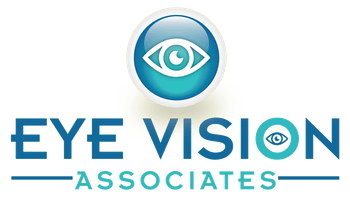 For some parents, having a nearsighted child simply means frequent visits to the optometrist and regular eyewear purchases. But the truth is that nearsightedness (myopia) is more than an inconvenient eye condition that frequently requires correction.
For some parents, having a nearsighted child simply means frequent visits to the optometrist and regular eyewear purchases. But the truth is that nearsightedness (myopia) is more than an inconvenient eye condition that frequently requires correction.
Taking the short-sighted approach to myopia by simply updating a child’s lens prescription every year or two doesn’t help them in the long run.
Below, we explore the connection between myopia and eye disease, and how myopia management can help your child maintain healthy eyes throughout their life.
How Can Myopia Lead To Eye Disease?
Myopia is caused by the elongation of the eyeball. When the eyeball is too long, it focuses light in front of the retina instead of directly on it, causing blurry vision.
As childhood myopia progresses, the retina (the light-sensitive tissue lining the back of the eye) stretches and strains, making the child more prone to serious eye diseases, including macular degeneration, glaucoma, and retinal detachment, in adulthood.
Having medium to high myopia (-3.00 to -6.00) also increases a child’s chances of developing cataracts fivefold, compared to a child with little to no myopia.
Glaucoma is a leading cause of blindness in adults around the world. Medium to high myopia makes a child 5 times more likely to develop this sight-threatening eye disease as an adult. Several studies have also shown that the higher the myopia, the greater the risk of developing glaucoma.
Retinal detachment is also heavily linked to childhood myopia. A child with low myopia (-1.00 to -3.00) is 4 times more likely to develop retinal detachment, while children with high myopia are 10 times more likely to suffer from retinal detachment.
Highly myopic children are also at a significantly greater risk of developing myopic macular degeneration — a rare condition where the retina thins so much, it begins to break down and atrophy, leading to visual impairment. This condition occurs in 10% of people with high myopia (-6.00 and higher).
The fact is that most parents aren’t aware of these risks. That’s why we’re here for any questions you or your child may have about myopia and how to slow its progression.
What Is Myopia Management?
Myopia management is an evidence-based treatment program that slows or halts the progression of myopia in children and young adults. These treatments reduce the ocular stress that contributes to the worsening of the child’s myopia.
Our optometric team will take the time to sit with you and your child to learn about their lifestyle and visual needs in order to choose the most suitable treatment.
Once a treatment plan is chosen, we will monitor your child’s myopia progression over a 6-12 month period to assess the plan’s effectiveness.
With myopia management, we bring your child’s future into focus.
To schedule your child’s myopia consultation, contact Eye Vision Associates today!
Frequently Asked Questions with Dr. Gwen Gnadt
Q: How old does my child have to be to begin myopia management?
- A: Children as young as 8 years old can begin myopia management. In fact, children who are at risk of developing myopia or high myopia should ideally start before the age of 10 for optimal results, but it’s never too late to start! Either way, your optometrist will help determine whether your child is ready.
Q: Do children with very low myopia need myopia management?
- A: Yes, definitely. Taking the ‘wait and see’ approach runs the risk of allowing your child’s prescription to rise as they grow older, increasing their risk of developing serious eye diseases in the long run.
Eye Vision Associates serves patients from Nesconset, Ronkonkoma, Lake Grove, and Centereach & Hauppauge, New York and surrounding communities.
